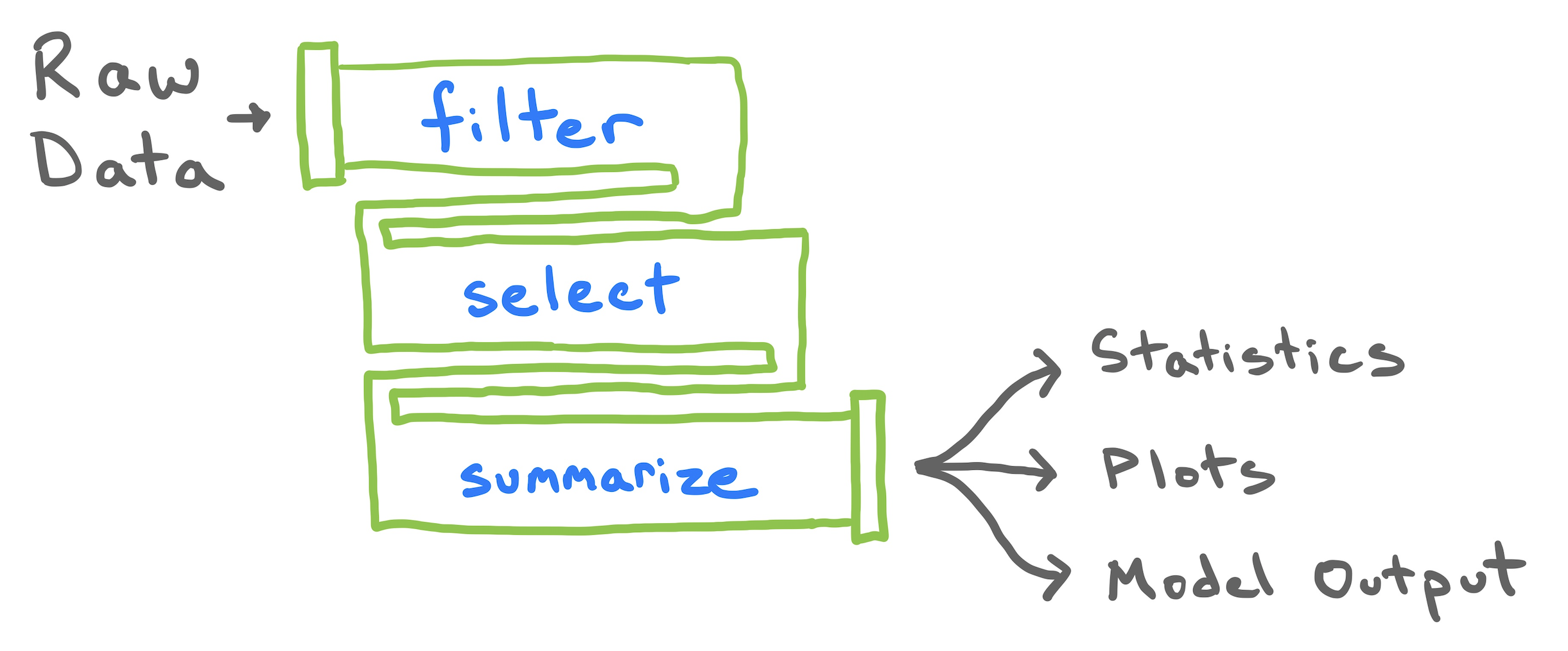Data Pipelines
Agenda
- Concept Questions
- Problem Set 4
- Break
- Lab 2.1: Flights
Announcements
- RQ: A Grammar of Graphics due Wednesday at 11:59pm
- Problem Set 4 (paper, max. 3) due next Tuesday at 9am
- Lab 2.1 (paper, max. 2) due next Tuesday at 9am
- Quiz 1 next Monday at 11:59pm (direct logistical and content questions to the syllabus and megathread on Ed).
Concept Questions
Question 1
What will this line of code return?
Respond at pollev.com.
01:00
Evaluating equivalence, cont.
In R, this evaluation happens element-wise when operating on vectors.
[1] TRUE TRUE FALSE[1] FALSE FALSE TRUE[1] TRUE TRUE FALSEQuestion 2
Which observations will be included in the following data frame?
Please respond at pollev.com.
01:00
Question 3
Which data frame will have fewer rows?
Concept Question 2 Redux - Building data pipelines
How do we extract the average of these students’ chance that class will be disrupted by a new COVID variant?
Let’s look at three different ways to answer this question
Nesting
Nesting
Nesting
Nesting
Nesting
Cons
- Must be read from inside out 👎
- Hard to keep track of arguments 👎
Pros
- All in one line of code 👍
- Only refer to one data frame 👍
Step-by-step
Cons
- Have to repeat data frame names 👎
- Creates unnecessary objects 👎
Pros
- Stores intermediate objects 👍
- Can be read top to bottom 👍

Using the pipe operator
Cons
- 🤷
Pros
- Can be read like an english paragraph 👍
- Only type the data once 👍
- No leftovers objects 👍
Understanding your pipeline
It’s good practice to understand the output of each line of code by breaking the pipe.
Concept Question 2 Redux
What are the dimensions (rows x columns) of the data frames output at each stage of this pipe?
01:00
Concept Question 4
What is will this line of code return?
Respond at pollev.com.
Boolean Algebra
Logical vectors have a dual representation as TRUE FALSE and 1, 0, so you can do math on logicals accordingly.
Taking the mean of a logical vector is equivalent to find the proportion of rows that are
TRUE(i.e. the proportion of rows that meet the condition).
Break
Problem Set 5: Data Pipelines
25:00
Break
05:00
Lab 2.1: Flights
Let’s move to the lab slides on the course website!
25:00